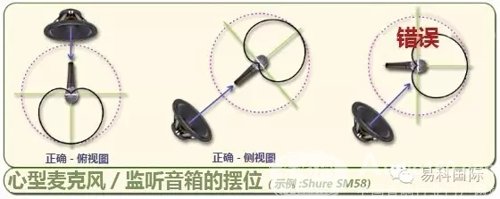Speakers that provide ground-based reverberation for bands and choirs on the stage are commonly referred to as stage monitors or stage return speakers. How to optimize the pre-feedback gain before the graphic equalization is the most often misunderstood part of the sound reinforcement system. The return speaker can be placed anywhere on the stage, and some of the tips below can help you get out of the pitfall and get more feedback before gain. Even if your microphone doesn't whistle, you may hear a low "empty" sound. Although the acoustic environment of the building itself can cause this problem, it is most likely because the microphone picks up too many signals and feeds it into the system signal chain, and then you will hear very harsh feedback whistling . Before we start discussing system optimization, there are some points of knowledge that you must master. To understand the placement of the stage monitor speakers, you must have an understanding of the type of microphone you are using. According to the pickup mode of the microphone, it is generally divided into an omnidirectional microphone and a single directional microphone. The omnidirectional microphone picks up the sound evenly from all directions, so it is rarely used for live performances. A single-point microphone picks up sound only in a particular direction. When we point the microphone at the stage monitor, there is a chance that a feedback whistle will occur, so the pointing of the microphone away from the stage monitor seems to be the best choice. But the premise is that you are using a cardioid microphone. The heart shape points to its pickup range much like a heart. Let's take a look at the pickup mode of the supercardioid microphone. You will find that pointing the microphone away from the monitor is not necessarily the best method, because the supercardioid microphone has almost the same sensitivity to the sound from the front and the back. You will find that the best way to place a supercardioid microphone is to make it slightly off the axis of the monitor. Use 2 stage monitors, or adjust the angle of the microphone to make it as good as possible for the performer. 诀çª: If you need a little more gain, try inverting. Inverting the microphone with a large level signal. Try to reverse the polarity switch on the mixer, which will often work well. The reason why I teach you these skills is not to tell everyone that the sound pressure level of the monitoring system is as large as possible. We all know that we do not require the sound pressure level of the monitoring system to be large. If you can apply this knowledge to practice, I believe that you can avoid the tormented feedback whistling. Before you convince the finance department to deploy a new in-ear monitor system, I hope that these tips will help you. Banknote Value Counting Machine Two CIS Suzhou Ribao Technology Co. Ltd. , https://www.ribaoeurope.com


In most cases, it is better to reverse the entire speaker system. The system can be inverted by exchanging the positive and negative connectors of the amplifier output of the monitor monitor. Since I made some jumpers, I don't need to reconnect here. Although this is not the case for all occasions, there are often times when you can get an extra 3dB gain.
May 05, 2021